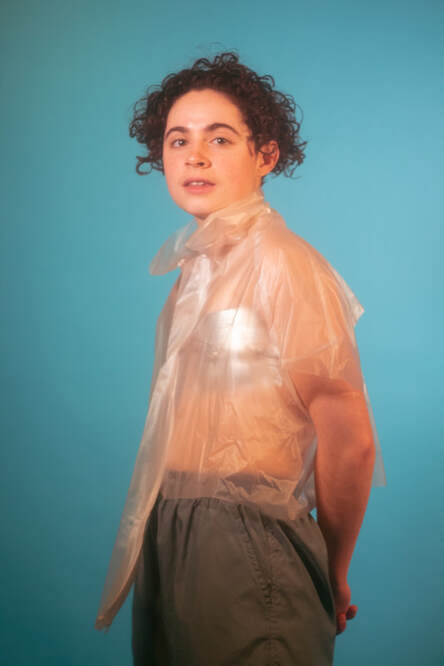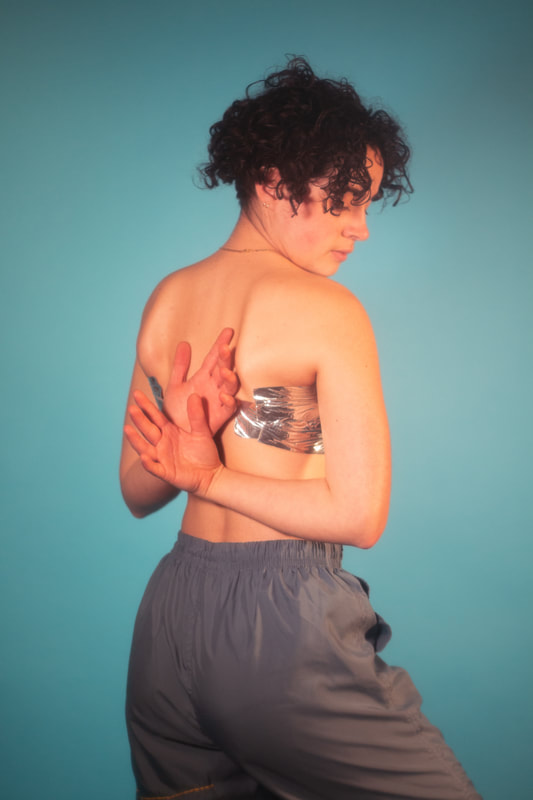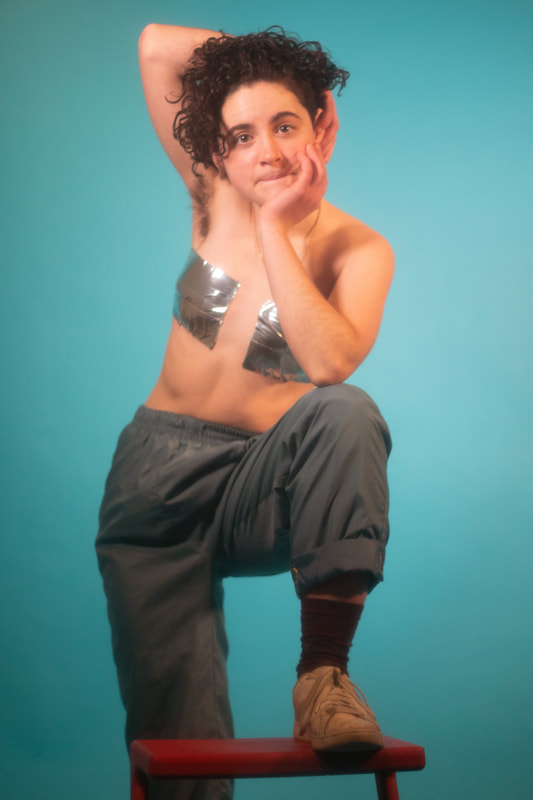|
UMA People is a series of profiles of UMA 'regulars,' though there's nothing regular about them! In UMA People shares stories about how people in our community found dance, found UMA, and what it all means to them. Photos: Adriana Imhof  At a very young age, Lu Donovan's (they/them) was plopped into a Ballet class by their parents. Perhaps a common occurrence in suburban Boston. However, for Lu, “Unlike a lot of other people who have that experience, I just never quit. I never stopped doing it. It took me through the first 18 years of my life on a momentous path of training: 6 days a week, 4 hours a day.” Lu continued with Boston Ballet’s pre-professional training program until, when it was time to consider college, conservatory, or something else, mentors and teachers made it clear to them that “it wouldn't be possible for me to become a professional ballet dancer. Mostly because of body size and shape.” If you’re not familiar with ballet this might seem confusing. In the world of professional ballet, it’s not just about silhouette. It’s about 1 million other predetermined anatomical factors, such as one’s muscle development, metabolism, torso to leg proportions, and range of joint mobility, especially the hips. Mix that in with Ballet’s embedded traditions of racism, sexism, and classism, and it starts to be clear that, despite an entire lifetime of training, the cards can be stacked against an aspiring ballet dancer despite years of training. When Lu decided to leave Boston Ballet and attend a liberal arts college, they experienced a “beautiful awakening about what dance is and could be.” Lu explains to me that at Boston Ballet discouraged exposure to other ballet studios or other styles of dance. The mindset was: “If you don’t go here, then you’re not a good dancer.” Moreover, the depressingly common belief that ballet is the one and only foundational technique for all other dance styles, was hammered home constantly in their early training. It wasn’t until they left Boston Ballet that they found out about the Dance Complex. The Dance Complex is housed in a labyrinthian historic building just across the river from Boston Ballet, in Central Square, Cambridge. It has been a home to a plurality of dance styles since the 90’s, and before that, in its former capacity as the Joy of Movement since the early seventies. Lu laughs as they describe their first experiences of the contemporary and improvisation based styles they encountered in college, “I kinda got bullied out of being a bunhead when I showed up the first day in a leotard. Everyone was like ‘What are you doing?’” Lu got over the initial shock, and so did their peers, whose initial shade became a call to awareness, and eventually, a supportive community. Lu explains almost everything they made in university was collaborative; their growth was fueled by the acceptance and encouragement of their peers. “I was realizing I don’t have to point my feet and turn out my hips to be a dancer. It opened all the possibilities of style, movement, textures, that my body, and a body, could hold in dance. It showed me the infinite possibilities of what a dancing body could be.”
Lu graduated from Wesleyan University in 2018 with a dual degree in Dance and Critical American History. I asked Lu why Wesleyan. With the benefit of hindsight, they replied, “I think I liked that there was a lot of queer people.” Similarly, Lu moved to Philly in part because during early visits to the city, they appreciated the presence of queer communities. Before COVID precautions kicked in, Lu was organized a gathering of Queer dance makers. Lu explains, “I found a lot of queer people in my life when I moved to Philly. And the community is very vast. But the places where my queer community and my dance community overlap are fewer. Is this a problem that other queer people are facing? Is there a gap?” Lu explains that the event they were planning, now indefinitely postponed, was intended to be “a space where people could come together and be seen as queer and want to collaborate. To talk about ideas or recommend other queer photographers, designers, spaces, choreographers. To really bulk up that community." Lu first came to UMA at the urging of friends Julia Bryck and Kayla Bobalek. Lu was attending Headlong Performance Institute (HPI), and found themselves missing dancing. (HPI is an extension of Headlong Dance Theater, a boundary blurring dance and physical theater company that's been an engine of Philly's dance/theater scene since the 90's). Short on funds, but desperate to move, Lu signed up for an 'Intro Month' at UMA -- back when we had a physical studio space -- and came to class every day. “I tried everything”, they said. That was about a year ago. Pre-COVID Lu was no longer at UMA everyday, but found a sustainable training rhythm; they took house regularly and often dropped in on UMA other classes, becoming a work study in early 2020. (Lu also shouts out Shannon Murphy's classes as another local favorite.) Lu says they feel safe being queer at UMA but the space, overall, with its many purposes and sub-communities, hasn't put forth a sense of queer community or collective for them. Lu says "queer people are there, we dance together on a regular basis" but Lu is "craving something a step further." For Lu, the multitude of styles they’re able to train and explore at UMA is part of the expansiveness of queerness. Lu is invested in “all of the possibilities of how a body can move.” They explained, “I’m excited about researching and investigating in a dance context with myself and other people about gender and queerness, how a body looks, walks, moves through space.” Comments are closed.
|
ContributorsKayla Bobalek Archives
May 2024
Categories |
Locations
812 Chestnut StSearch 'Urban Movement Arts @ 812 Chestnut' on Google Maps
|
2100 Chestnut St. 2nd Flr
*entrance is on 21st! between Rione Pizza & Monde Market*
|




 RSS Feed
RSS Feed